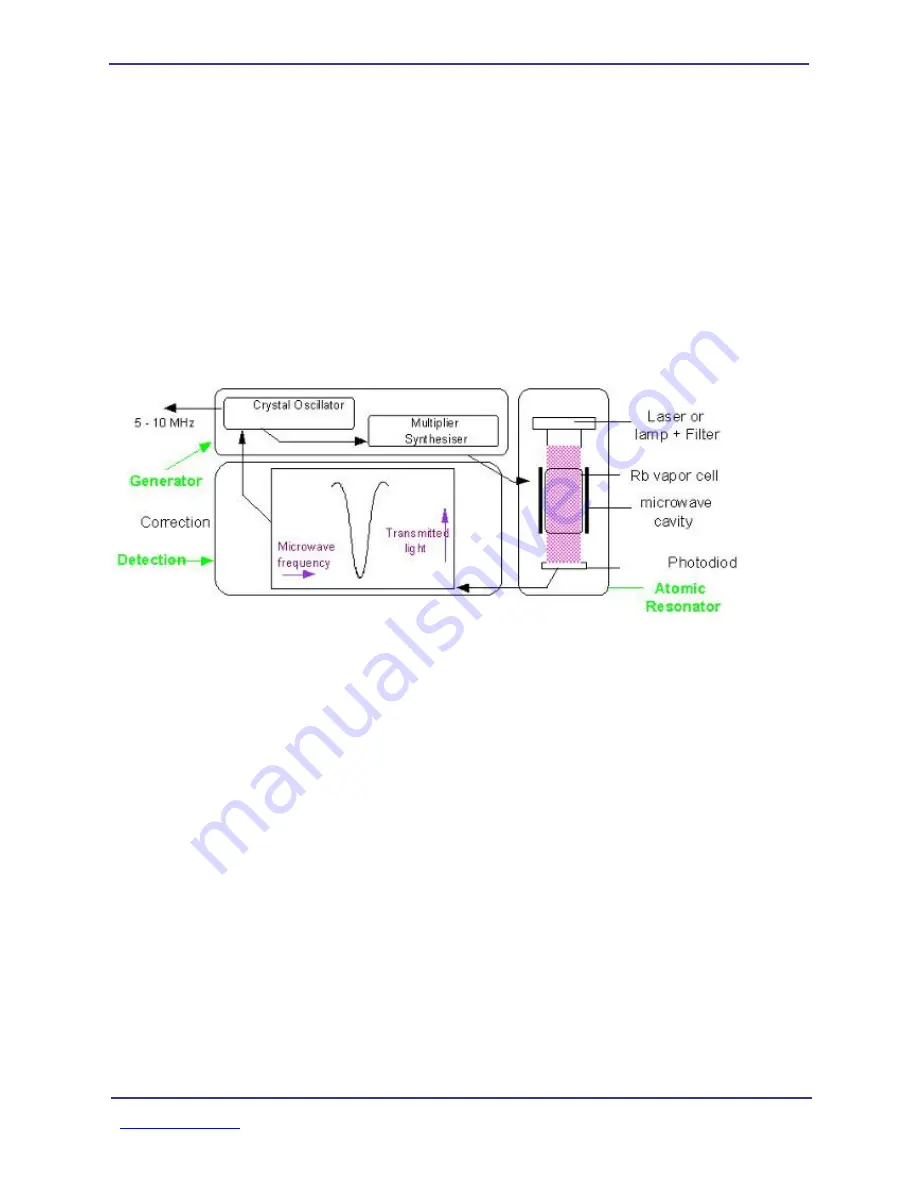
iSource
®
StarLPRO-1500
Manual
©SpectraTime
Europe Headquarters
North America Sales Offices
Page 4 of 12
+41.32.732.16.66
+1.512.470.3980
spectratime.com
An
Orolia Group
Business
transition out of one of the two ground state levels (line A), enters the principal absorption region.
The pump light excites Rb87 atoms which are in the lower hyperfine level (F=1) to the short-lived excited state
P from which they decay to the two ground state levels (F=1,2) with equal probability. Since pumping occurs
continuously out of the F=1 level, after some time, almost all atoms are found in the F=2 level and no further
absorption occurs.
The transmitted light level is detected by a photodiode after the cell. If now a microwave field resonant with
clock transition F=2® F=1 is coupled to the interaction region, the level F=1 is repopulated and light absorption
is enhanced. A sweep of the microwave field over the resonance is detected as a small dip in the transmitted
light level after the cell.
This signal is fed into a synchronous detector whose output generates an error signal which corrects the
frequency of the VCXO when its multiplied frequency drifts off the atomic resonance maximum.
The absorption cell is filled with metallic vapor which contains Rb85 and Rb87 isotopes and a buffer gas.
Filtering of the pump light is achieved in the entrance region of the cell by absorption with Rb85 atoms which
have an accidental overlap with one of the Rb87 resonance transitions (line B): integrated filter cell.
Fig. 2-2: Rubidium atomic clock principal block diagram
The principal function of the buffer gas is to keep the Rb atoms away from the cell walls and restrict their
movements. As a result they are practically "frozen in place" for the interaction time with the microwave field. In
this way the Doppler-effect is virtually removed and a narrow line width results.
The cell region is also surrounded by a so-called C-field coil which generates a small axial static magnetic field
to resolve the Zeeman sub-transitions of the hyperfine line and select the clock transition, i.e. the one with the
least magnetic sensitivity. To further reduce the magnetic sensitivity, the complete physics package is placed
into nested magnetic shields.
Fig. 2-2 gives a basic overview of the different function blocks of the Rubidium atomic clock. The STARLPRO-
1500 consists of three different packages. The optical elements, which include the Rb absorption cell and
microwave cavity, form the atomic resonator, while the electronics package is constituted of the generator and
the detection circuitry.































